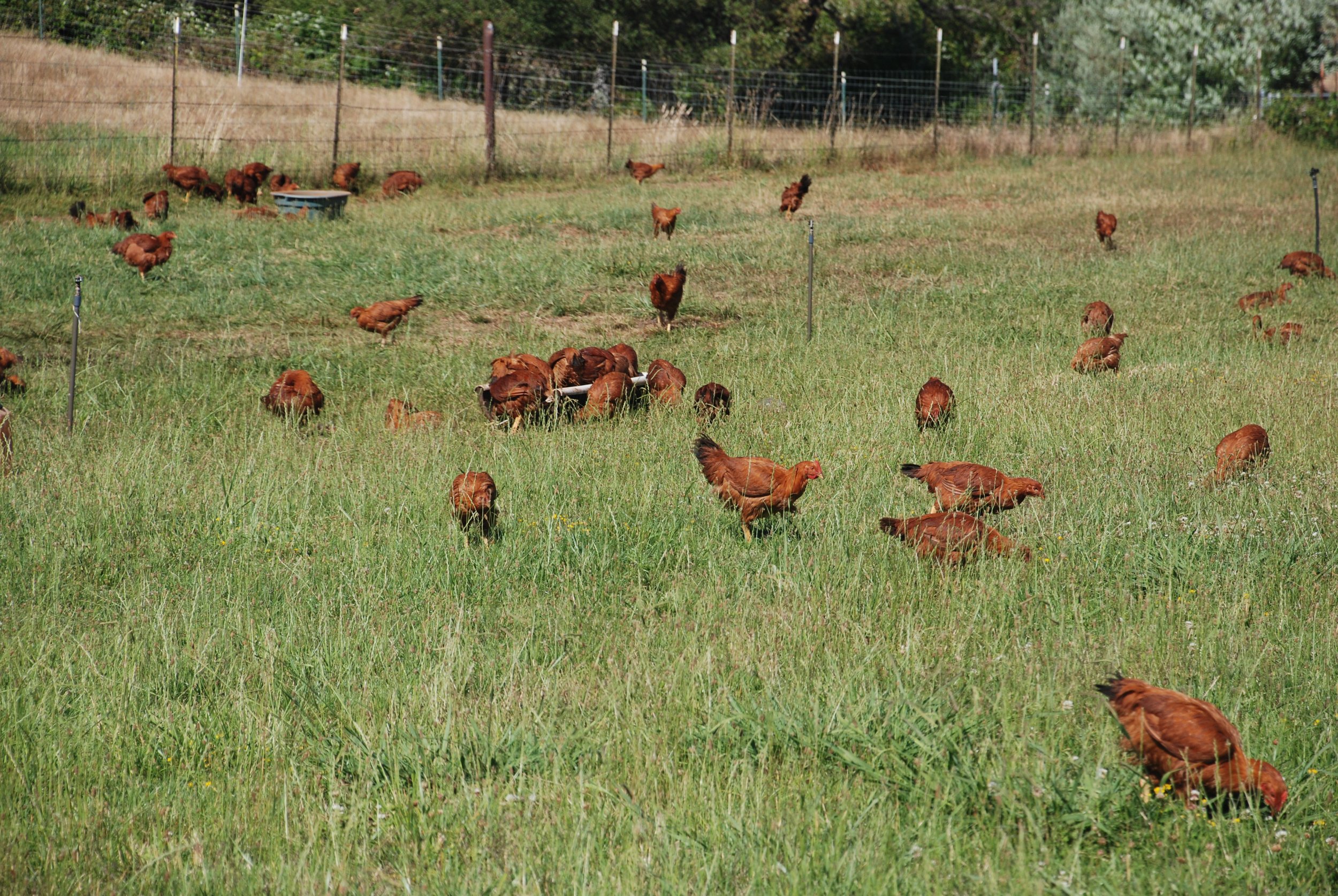Nature Knows Best
Our Lady’s Ranch is made possible by the many long hours of work we’ve put into it with Family Friendly Farms, the grass-fed and grass-finished healthy meat business we started back in 2010. It is such a part of our journey here that we want to share the primary way we care for our animals (and thus our people)! Even if you live on a homestead that doesn’t have any animals (yet), it’s good to start learning now because knowing how to grow healthy food is the first step to a healthy lifestyle — a healthy lifestyle that includes both the physical and spiritual as we are body and soul… Enjoy!
HEALTHY ENVIRONMENT + HEALTHY ANIMALS = HEALTHY HAPPY PEOPLE
Cows, Pigs, Sheep, Chicken, and Turkeys all eat grass – and lots of it!!! They also eat the protein rich grass seeds which sway in the breeze at the tips of the healthy grass shoots. There are many varieties of grasses that grow here at Our Lady’s Ranch in Grass Valley, that collectively we call forage for the animals that we raise here. Healthy forage is the key to raising healthy animals, and it doesn’t just happen by accident, so here’s how we consciously work to provide healthy meat for our family and friends both on and off the homestead…
It all begins with cleanliness, “For cleanliness is close to Godliness” – Clean water from the Sierra Nevada Mountains, clean air from the pacific westerly breeze, clean sunshine from the Northern California climate, clean pastures with chemical-free forage, and clean animals free of any added hormones, antibiotics, corn, soy, or GMO’s.
After cleanliness, the next most important ingredient to naturally raising healthy animals is fresh, nutrient dense natural forage. The dozens of grass varieties that grow here at Our Lady’s Ranch are indigenous to this region and naturally flourish here so we encourage their growth. Well, actually, we encourage the growth of most of the varieties here and discourage the growth of others. Not all grasses are created equally – some have wider blades with more cellulose, protein, and carbohydrates, while others are “stemmy” and much lower in nutrition. So we utilize a system of livestock rotation to control the animal’s grazing patterns in order to increase the nutrient rich grasses while decreasing the undesirable ones.
Moving the various animals across segregated pastures called paddocks (separated by fencing) creates many positive benefits for the forage quality, animal health, and environment. The cows are allowed to graze first, moving across the paddock with fresh, knee-high forage that they excitedly clip from top to bottom. They naturally eat the top two-thirds of the grass plants while trampling a portion of it, which is necessary to add to the top-soil of the pasture (mimicking the natural paths of the buffalo that came before them). After a full day of heartily munching grass and chewing their cuds (Digesting the forage in the rumen of their four-part stomach, which is designed to process grass, not grain) the cows are moved to a new, fresh paddock to continue their diet of clean, fresh forage.
Meanwhile, the previous paddock has just received a healthy dose of fresh, natural fertilizer from the happy cows, but it’s all concentrated in small patties everywhere. So we let it sit for a few days and then bring in the poultry (Chickens and/or Turkeys). And now the grass has been clipped to poultry friendly height that they can enjoy along with the grasshoppers and insects that have been exposed by the cows before them. Also, the Chickens and Turkeys scratch through the cow patties eating the fly larvae (which is extremely high in protein for them) while naturally spreading the fertilizer around, maintaining healthy, clean pastures for all the other animals.
The Chickens and Turkeys provide an additional benefit to the pastures – the spreading of their own waste product, which just so happens to be the best nitrogen rich fertilizer available on the planet. The collectible bi-products of this symbiotic process include the most natural, pure, and healthy chicken eggs available anywhere. The creamy whites and dark-orange yokes look richer, taste better, and contain one half the cholesterol of industrial grown eggs, while again sustaining a clean, healthy environment for all of us.
The pigs come next grunting and snorting and getting into everything, especially the acorns… yum! The pigs rotate pastures more on an annual basis than a daily or weekly one like the cows and chickens, but nonetheless they provide an equally important function to this natural ecosystem including aerating the pastures and removing the larger bugs.
Then come the sheep… our weed-whacking department. Sheep like grasses that are more fibrous (“stemmy”) – the ones that are undesirable for the cows. So that makes for a nice complimentary diet. They roam around the pastures cleaning up all the weeds while converting our biggest pests into tasty-tender meat.
These rotational grazing practices allow the natural foraging habits of our animals as originally intended by our Creator. They provide the animals with a low-stress environment that naturally allows them to grow at the normal pace that they have been accustomed to over centuries. The results are not only a much healthier product for us to eat, but a much more tasty meat that is packed with nutrients, as God originally intended for us.
We live in a Healthy Environment and grow Healthy Forage so that we can raise Healthy Animals in order to live a Healthy Life – both Physically and Spiritually.
God Bless!
Phil Zeiter
Our Lady’s Ranch
CHLICK THE BUTTON BELOW TO LEARN MORE OF THE HEALTH BENEFITS!





